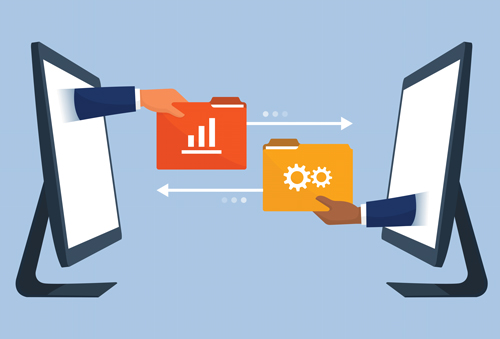Understanding Phishing Attacks: How to Protect Your Business
Introduction to Phishing Attacks

Overview of Phishing
Phishing is a cyber-attack that uses “Social Engineering” techniques where attackers target people rather than the technology by disguising themselves as trustworthy entities to steal sensitive information such as usernames, passwords, and financial details. This type of attack typically involves fraudulent emails, websites, mobile devices, or messages that appear legitimate but are designed to trick individuals into revealing personal data.
Importance of Awareness
Phishing attacks have become increasingly sophisticated, posing significant threats to businesses of all sizes. Where phishing used to be limited to emails with obvious typos and spelling mistakes, they now include AI generate voice and video calls that can accurately mimic the voice and video image of trusted real people with computer generated fakes. They can lead to severe financial losses, data breaches, and damage to a company's reputation. As cybercriminals continue to evolve their techniques, it is crucial for businesses to stay informed and proactive in their defence strategies and response planning.
Purpose of the Article
The objective of this article is to educate business owners and employees about the nature of phishing attacks, how they operate, and effective strategies to prevent them. By understanding the mechanisms behind a phishing attack and implementing robust security measures and response plans, businesses can better protect themselves against these pervasive threats. This guide will cover some the different types of phishing attacks, methods to recognize and prevent them, and the importance of employee training and email security in safeguarding sensitive information.
Understanding Phishing
Definition Phishing is a type of cyber-attack where attackers use deceptive messages and real time communications to trick individuals into divulging confidential information such as usernames, passwords, and financial details. These attacks often appear to come from reputable sources, making them difficult to detect.
Types of Phishing Attacks
Email Phishing This is the most common type of phishing. Attackers send emails that appear to be from legitimate organizations, such as banks or online services. These emails often contain links to other fraudulent sites or websites designed to steal personal information.
Spear Phishing Spear phishing is a targeted form of phishing. Unlike broad phishing attacks, spear phishing emails are tailored to specific individuals or organizations. Attackers gather information about their targets to make their phishing messages more convincing, increasing the likelihood of success.
Whaling Whaling targets high-profile individuals within an organization, such as executives or other key personnel. These cyber attacks are highly personalized and often involve significant research to trick the victim into divulging sensitive information or transferring funds.
Vishing (Voice/Video Phishing) Vishing involves identity theft through the use of phone and video calls to deceive victims. Attackers may pose as bank representatives, technical support, or other trusted or known entities sometimes using an AI generated voice or video that appear to be known individuals to extract personal information over the phone.
Smishing (SMS Phishing) Smishing uses SMS text messages to deliver phishing attempts. These messages often contain links to malicious websites or prompt the text message recipient to call a fraudulent phone number.
How Phishing Targets Businesses
Methods Used
Phishing attacks targeting businesses often involve sophisticated social engineering techniques. Attackers may send emails or messages that appear to be from trusted sources, such as business partners or senior executives, to deceive employees into revealing sensitive information. These messages may contain malicious links or attachments that, once clicked or opened, install malware, steal sensitive data or redirect the victim to a fraudulent website.
Sectors Targeted
Phishing attacks can target any sector, but certain industries are more frequently targeted due to the nature of their data. The financial sector is a primary target because of the direct access to monetary transactions. Healthcare organizations are also targeted for their valuable patient data. Other common targets include the education sector, government agencies, and retail businesses. These sectors are attractive to cybercriminals due to the large volumes of sensitive information they handle, making them prime targets for phishing schemes.
Recognising Phishing Emails

Common Signs
Phishing emails may exhibit several telltale signs. Look for generic greetings like "Dear Customer" instead of personalized addresses. Be wary of poor grammar and spelling mistakes, as legitimate organizations usually have quality control processes in place. However these signs have recently become less common with more professional crime syndicates using more deliberate targeting rather than “drive by” attacks. Additionally, check for similar but mismatched or suspicious email addresses that don't align with the purported sender.
Examples
Phishing emails may include urgent language, such as "Your account will be suspended unless you act now," to create a sense of urgency. They might also contain unsolicited attachments or links that direct you to fake websites designed to steal your credentials. For instance, an phishing email claiming to be from your bank might ask you to click a link to verify your account information, leading to a fraudulent site that mimics the bank's legitimate website. Recognizing these signs can help prevent falling victim to phishing scams.
Impact on Businesses
Potential Damages
Phishing attacks can have devastating consequences for businesses. Financial losses are a primary concern, as attackers often aim to steal money directly or indirectly through fraudulent credit card transactions. Beyond immediate financial impact, businesses may suffer from data breaches, leading to the loss of sensitive customer information, intellectual property, and other critical data. This can result in legal penalties and regulatory fines, particularly if the business fails to comply with data protection laws.
Statistics
Statistics highlight the severity of the threat. According to a 2023 report by the Anti-Phishing Working Group, businesses worldwide lost over $1.8 billion due to phishing attacks in the past year. Additionally, a study by Verizon found that 30% of data breaches involved phishing, emphasizing the prevalence of this attack method. The long-term impact includes reputational damage, loss of customer trust, and the costs associated with mitigating the breach and restoring security of financial institution.
Preventing Phishing Attacks
Employee Awareness and Training
Importance and Methods: Employee training is crucial in preventing phishing attacks, as human error is often the weakest link in cybersecurity. Educating employees about the risks and signs of phishing campaigns can significantly reduce the likelihood of falling victim to such attacks. Effective training methods include regular workshops, simulated phishing exercises, and up-to-date informational resources. These activities help employees recognize phishing attempts and understand the importance of verifying suspicious communications. Regular updates and refresher courses ensure that staff stay vigilant and aware of the latest phishing tactics.
Email Security Measures
Filtering and Spam Detection: Implementing robust email security measures is essential to filter out phishing attempts. Spam filters and email security gateways can automatically detect and block suspicious emails before they reach employees' inboxes. These systems use advanced algorithms and databases of known threats to identify phishing emails based on various indicators, such as sender reputation, email content, and embedded links. Additionally, implementing Domain-based Message Authentication, Reporting & Conformance (DMARC) can help prevent your brand being used in spoofed emails by verifying the sender's authenticity. Regularly updating these systems ensures they can detect the latest phishing tactics.
Best Practices
Updates, Multi-Factor Authentication, Complex Passwords Adopting best practices in cybersecurity can greatly enhance protection against phishing attacks. Keeping all software and systems up to date with the latest security patches helps close vulnerabilities that attackers might exploit. Multi-factor authentication (MFA) adds a critical extra layer of security, requiring users to verify their identity through multiple means, making it harder for attackers to gain access. Changing to complex password changes and using strong, unique passwords for different accounts can prevent attackers from exploiting stolen login credentials again. Encouraging these practices across the organization strengthens overall security.
Response Plan
Steps and Importance: Having a well-defined and rehearsed response plan for phishing attacks is critical for minimizing damage. The first step to report phishing attempts is to immediately report and isolate the phishing attempt to prevent it from spreading within the organization. IT teams should investigate the incident to understand its scope and implement measures to mitigate any breaches. Inform affected parties and provide guidance on steps to secure their information. Conducting a thorough review and updating security protocols based on lessons learned from the incident can help prevent future attacks. Regularly reviewing and testing the response plan ensures preparedness for real incidents.
Role of IT Security
Responsibilities and Collaboration
The primary responsibility of the IT security team is to protect the organization's digital assets from threats like phishing attacks. This includes continuous monitoring of network activity, implementing security measures, and responding swiftly to incidents. IT security teams maintain antivirus software, firewalls, and intrusion detection systems to prevent breaches.
Collaboration across departments is crucial for a robust security strategy. IT security teams work with HR to incorporate security training into onboarding processes and with management to develop and enforce security policies. Regular communication with all departments helps identify potential vulnerabilities and ensures everyone understands their role in maintaining security.
Using Anti-Phishing Tools
Software Overview
Anti-phishing tools are specialized software solutions designed to detect and prevent phishing attacks. These tools use advanced algorithms to analyse email content, links, and attachments for signs of phishing. Popular anti-phishing software includes email security gateways, browser add-ons, and endpoint protection platforms. Solutions like Mimecast, Proofpoint, Microsoft Defender and Barracuda are widely used to filter out phishing emails before they reach users' inboxes.
Benefits
Implementing anti-phishing tools provides multiple benefits. They enhance security by automatically identifying and blocking phishing attempts, reducing the risk of successful attacks. These tools also provide real-time alerts and detailed reports, helping IT teams respond swiftly to threats. Additionally, anti-phishing software can be integrated with existing security systems, providing a comprehensive defence against cyber threats.
Network Security Measures
Key Practices
Effective network security measures are essential for protecting against both email phishing attacks and other cyber threats. One key practice is network segmentation, which involves dividing the network into smaller, isolated segments to limit the spread (otherwise known as the “Blast Radius”) of an attack. Implementing next generation firewalls is another crucial step, as they act as a barrier between the internal network and external threats.
Web filtering, Intrusion detection systems (IDS) and intrusion prevention systems (IPS) are essential for monitoring network traffic to identify suspicious activities and promptly block potential threats in real time. Regularly updating and patching network devices and software ensure vulnerabilities are addressed promptly. Additionally, employing zero trust network access for remote access can secure data transmission over public networks.
Regular Security Audits
Importance
Regular security audits are crucial for maintaining the integrity of an organization's IT infrastructure. These audits help identify vulnerabilities, ensuring that any weaknesses are promptly addressed before they can be exploited by cybercriminals. By regularly reviewing and updating security measures, businesses can stay ahead of emerging threats and maintain compliance with industry standards and regulations.
Process
The process of conducting a security audit involves several key steps. First, auditors gather and review existing security policies and procedures. Next, they perform a thorough examination of the IT infrastructure, including networks, systems, and applications, to identify potential vulnerabilities. After identifying risks, auditors provide detailed reports with recommendations for remediation. Implementing these recommendations enhances the organization's overall security posture.
Creating a Security-Aware Culture
Fostering Awareness
Creating a security-aware culture within an organization begins with fostering awareness among employees. This involves regular training sessions to educate staff on the latest cyber threats, such as phishing attacks, and how to recognize them. Providing clear guidelines and resources helps employees understand the importance of security practices and their role in maintaining a secure environment.
Encouraging Reporting
Encouraging a culture of reporting is equally important. Employees should feel comfortable reporting suspicious activities or potential security breaches without fear of repercussions. Implementing a straightforward reporting system can facilitate this. Regularly reinforcing the importance of vigilance and reporting through internal communications and workshops helps maintain a proactive stance against cyber threats. This collective effort ensures that the organization remains vigilant and resilient against phishing, ransomware attacks, and other security challenges.
Legal and Compliance Considerations
Obligations
Businesses are legally obligated to protect sensitive data and ensure their cybersecurity measures are robust. This includes complying with data protection standards such as the Australian Privacy Principles and General Data Protection Regulation (GDPR) for businesses operating in the EU or dealing with EU citizens. Non-compliance can result in hefty fines and legal penalties. ASIC has recently repeated several times their expectation that company directors will be held accountable for the failure of an organisation to put in appropriate controls to ensure that its customers and partners confidentiality and security are maintained.
Regulations
Compliance with industry-specific regulations is crucial. For example, healthcare organizations must adhere to the Health Insurance Portability and Accountability Act (HIPAA) in the U.S., while financial institutions might follow the Payment Card Industry Data Security Standard (PCI DSS). Regular audits and assessments are necessary to ensure adherence to these regulations. Additionally, businesses should stay updated on local cybersecurity laws and standards to avoid legal repercussions and protect their reputation. Implementing comprehensive compliance programs helps in meeting these obligations effectively.
Future Trends in Phishing
Emerging Techniques
Phishing attacks are continually evolving, with cybercriminals adopting more sophisticated techniques to deceive their targets. Emerging trends include the use of artificial intelligence (AI) to create highly personalized phishing emails that are harder to distinguish from legitimate communications. Additionally, attackers are increasingly leveraging social media platforms to gather detailed information about their victims, enabling more effective, spear phishing (targeted) attacks and whaling attacks.
Preparation
To prepare for these advanced threats, businesses must stay informed about the latest phishing trends and continuously update their security measures. Utilising advanced threat detection systems that use machine learning to identify suspicious activity can help mitigate risks. Regular employee training sessions on new phishing tactics and enhancing security incident and response plans are also crucial. By staying proactive and adapting to the evolving threat landscape, businesses can better protect themselves from future phishing attacks.
Staying Informed

Reliable Resources
To stay ahead of phishing threats, businesses should rely on reputable sources for the latest cybersecurity information. Websites like the Australian Cyber Security Centre (ACSC) and the Cybersecurity and Infrastructure Security Agency (CISA) provide updates on new threats and best practices. Subscribing to cybersecurity newsletters and following trusted industry blogs can also keep businesses informed about emerging trends.
Continuous Learning
Continuous employee learning is essential in the fight against phishing. Regularly updating training programs to include the latest phishing techniques ensures that employees remain vigilant. Participating in cybersecurity webinars, workshops, and conferences can also provide valuable insights and skills. Encouraging a culture of continuous improvement and knowledge sharing within the organisation helps maintain a strong defence against phishing attacks.
Conclusion
Recap and Final Thoughts
Phishing attacks pose a significant threat to businesses, leading to financial losses, data breaches, and reputational damage. Understanding the various types of phishing, recognizing common signs, and implementing robust preventive measures are crucial steps in safeguarding your organisation. Employee training, email security, and regular security audits play vital roles in maintaining a secure environment.
To protect your business from phishing attacks, start by educating your team, preparing your response plans and implementing comprehensive security measures. Stay informed about emerging threats and continuously update your defences. By fostering a security-aware culture and leveraging independent advice, you can significantly reduce the risk of falling victim to a phishing scam. For expert guidance and advice tailored to your needs, visit Beyond Technology's Cybersecurity Services and take proactive steps to secure your business today.
FAQ
What is a phishing attack?
A phishing attack is a type of cyber attack where a malicious actor impersonates a trusted entity to deceive individuals into providing sensitive information like passwords, credit card numbers, or personal details.
What are the 3 most common types of phishing attacks?
The three most common types are:
- Email Phishing: Sending fraudulent emails that appear to be from a legitimate source.
- Spear Phishing: Targeting specific individuals or organizations with personalized messages.
- Whaling: A form of spear phishing targeting high-profile individuals like executives.
What is an example of phishing?
An example of phishing is receiving an email that looks like it's from your bank, asking you to click a link and enter your account details to verify your identity.
What are the four types of phishing?
The four types of phishing are:
- Email Phishing
- Spear Phishing
- Whaling
- Smishing: Phishing attacks conducted via SMS/text messages.



